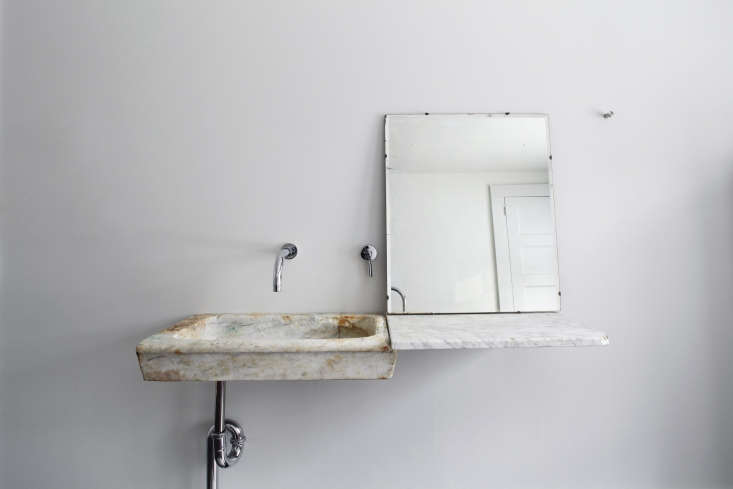A wall-mount bathroom faucet is a functional fixture and a decorative element in your bathroom. Proper maintenance and regular cleaning can preserve its aesthetic appeal and ensure smooth operation. This guide will explore the steps and tips to keep your wall-mount bathroom faucet clean and in good condition.
Step 1: Regular Cleaning
To maintain a clean and shiny wall-mount bathroom faucet, follow these steps:
1. Gather Necessary Cleaning Supplies
- Mild liquid soap or dish detergent
- Soft cloth or sponge
- A toothbrush or small brush
- White vinegar or lemon juice
- Microfiber cloth for drying
2. Turn Off the Water Supply
- Turn off the water supply and plug in the drain to prevent water damage or loss of small parts.
3. Clean the Faucet Surface
- Dampen the sponge or cloth with water and add a small quantity of detergent or soap.
- Gently wipe the faucet surface to remove dirt, grime, and fingerprints.
- Pay attention to crevices and hard-to-reach areas.
4. Remove Mineral Deposits
- Soak a sponge in white vinegar or lemon juice if there are mineral deposits or hard water stains.
- Apply the soaked cloth or sponge to the affected places and let it sit for a few minutes.
- Scrub gently with a toothbrush or small brush to remove the deposits.
- Rinse thoroughly with water.
5. Rinse and Dry the Faucet
Rinse the faucet with water to remove any cleaning residue.
Dry the upper surface with a microfiber cloth to prevent water spots.
Step 2: Preventative Maintenance
Perform these tasks periodically to keep your wall-mount bathroom faucet in good condition:
1. Check for Leaks
- Inspect the faucet for any signs of leaks or drips.
- Tighten loose connections or replace faulty parts as necessary.
2. Inspect and Tighten Connections
- Regularly check the connections between the faucet and water supply lines.
- If you notice loose fittings, gently tighten them with a wrench.
3. Lubricate Moving Parts
- Apply a silicone-based lubricant to moving parts such as the handle or cartridge.
- It helps maintain smooth operation and prevents squeaking or sticking.
4. Replace Worn-Out Components
- If you encounter persistent leaks, drips, or other issues, consider replacing worn-out seals, gaskets, or cartridges.
- Follow the manufacturer's instructions or seek professional assistance if needed.
Long-Term Care and Troubleshooting Tips
1. Preventing Water Stains
- Wipe the faucet dry after each use to avoid the buildup of water stains.
- Use a soft cloth or microfiber towel for the best results.
2. Handling Hard Water Buildup
- Regularly clean your faucet to remove mineral deposits caused by hard water.
- Consider installing a water softener or a water filter to reduce mineral content.
3. Dealing with Dripping Faucets
- Dripping faucets wastes water and can indicate underlying issues.
- Check for worn-out washers or damaged cartridges and replace them if necessary.
4. Identifying the Cause of Low Water Pressure
- Check the aerator for any debris or sediment buildup.
- Clean or replace the aerator to restore water flow.
5. Resolving Leaky Handles
- Tighten the handle screws or replace worn-out cartridges if the handles leak.
- Refer to the manufacturer's instructions or consult a professional plumber if needed.
6. Fixing Temperature Control Issues
- If you're experiencing inconsistent water temperature, adjust the temperature-limiting valve or replace the cartridge if it's faulty.
- Consult the manufacturer's guide for specific instructions.
7. Maintaining the Faucet’s Internal Components
- Clean internal components with a mild soap solution to remove any debris or buildup that may affect performance.
- Periodically inspect internal parts such as cartridges, valves, and seals for signs of wear or damage and replace as needed to prevent leaks or malfunctions.
- Apply silicone-based lubricant to moving parts like cartridges and O-rings to ensure smooth operation and prevent friction-related issues.
- Routinely check for leaks or drips from internal components and address any issues promptly to prevent water wastage and damage to surrounding areas.
- Install a water filtration system if necessary to protect internal components from sediment or mineral buildup, which can affect performance and lifespan.
- Consider scheduling periodic maintenance checks by a plumber to ensure all internal components are functioning correctly and address any potential issues before they escalate.
8. Protecting the Faucet’s Finish
- Clean the faucet's surface regularly with a soft cloth and mild soap to remove dirt, grime, and water spots that can dull the finish over time.
- Refrain from using abrasive cleaners or scouring pads, as they can scratch or damage the faucet's finish. Opt for gentle cleaning solutions and non-abrasive cloths instead.
- After cleaning or use, dry the faucet with a soft towel to prevent water stains and mineral deposits from forming on the surface.
- Avoid exposure to harsh chemicals such as bleach or ammonia, as they can corrode or discolor the faucet's finish. Stick to mild, non-abrasive cleaning agents.
- Place coasters or mats under soap dispensers, toothbrush holders, or other items to prevent them from scratching or damaging the faucet's surface.
- Be mindful of sharp or heavy objects near the faucet to prevent accidental impacts that could chip or scratch the finish.
- Consider applying a protective sealant or wax specifically designed for the faucet's finish to enhance durability and resistance to tarnishing or corrosion.
Conclusion
Proper cleaning and maintenance are essential for preserving the functionality and aesthetics of your wall-mount bathroom faucet. Following the steps mentioned above and the tips in this article, you can ensure your faucet stays clean, shiny, and in good condition for years. Regular care will prevent issues and save you from costly repairs. Invest a little time and effort into maintaining your faucet, which will reward you with reliable performance and a beautiful bathroom.


